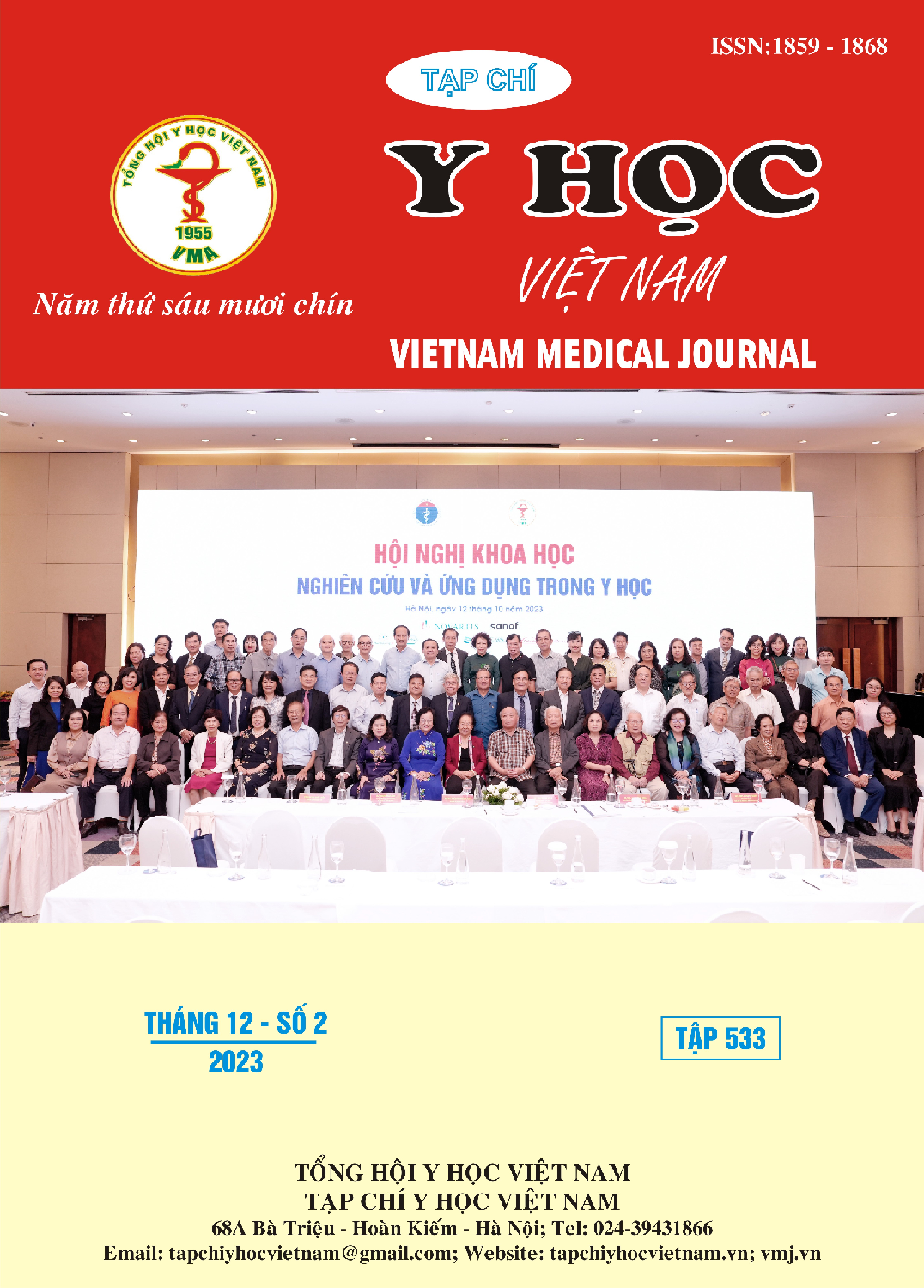LONG-TERM OUTCOMES OF SURGICAL TREATMENT FOR GASTRIC LINITIS PLASTICA
Main Article Content
Abstract
Purpose: There has been advances in the diagnosis and treatment, but the prognosis of gastric linitis plastica remains poor. This study analyzes the pathological characteristics, surgical outcomes, and survival after total gastrectomy. Methods: A study of 52 patients with gastric linitis plastica who underwent total gastrectomy and D2 lymphadenectomy from March 2012 to October 2021 at the Department of Gastrointestinal Surgery, University Medical Center at Ho Chi Minh City was conducted. Clinical data and surgical outcomes were collected to assess postoperative outcomes and overall survival. Results: The mean age was 62.5 years, with an equal distribution between males and females. The mean blood loss was 80 ml. Duodenal stump leakage occurred in one case (1.9%), and esophagojejunostomy leakage occurred in two cases (3.8%). There was one patient (1.9%) who died within 30 days after surgery. PT4a stage involvement was observed in 48 patients (92.3%), and 38 patients (73.1%) had regional lymph node metastasis. Microscopic margins are positive for tumor (R1) were found in 14 cases (26.9%). The 1-year, 3-year, and 5-year overall survival rate were 73.1%, 46.1%, and 17.3%, respectively. Conclusion: Total gastrectomy and D2 lymphadenectomy is effective for treatment of gastric linitis plastica. It is important to achieve R0 resection by performing frozen section of surgical margins.
Article Details
References
2. Ikoma N, Agnes A, Chen HC et al (2020). Linitis Plastica: a distinct type of gastric cancer. J Gastrointest Surg 24(5): 1018-1025.
3. Endo K, Sakurai M, Kusumoto E et al (2012). Biological significance of localized Type IV scirrhous gastric cancer. Oncol Lett 3(1): 94-99.
4. Jafferbhoy S, Shiwani H, Rustum Q (2013). Managing Gastric Linitis Plastica: Keep the scalpel sheathed. Sultan Qaboos Univ Med J 13(3): 451-453, 2013. PMID: 23984032.
5. Blackham AU, Swords DS, Levin EA et al (2016). Is Linitis Plastica a contraindication for surgical resection: a multi-institution study of the U.S. Gastric Cancer Collaborative. Ann Surg Oncol 23(4): 1203-1211. PMID: 26530447. DOI: 10.1245/s10434-015-4947-8
6. Yoshikawa T, Tsuburaya A, Kobayashi O et al (2001). Should scirrhous gastric carcinoma be treated surgically? Clinical experiences with 233 cases and a retrospective analysis of prognosticators. Hepatogastroenterology 48(41): 1509-1512, 2001. PMID: 11677997.
7. Schauer M, Peiper M, Theisen J et al (2011). Prognostic factors in patients with diffuse type gastric cancer (linitis plastica) after operative treatment. Eur J Med Res 16(1): 29-33, 2011. PMID: 21345767. DOI: 10.1186/2047-783x-16-1-29.
8. Pedrazzani C, Marrelli D, Pacelli F et al (2012). Gastric linitis plastica: which role for surgical resection? Gastric Cancer 15(1):56-60, 2012. PMID: 21717092. DOI: 10.1007/s10120-011-0063-z.


